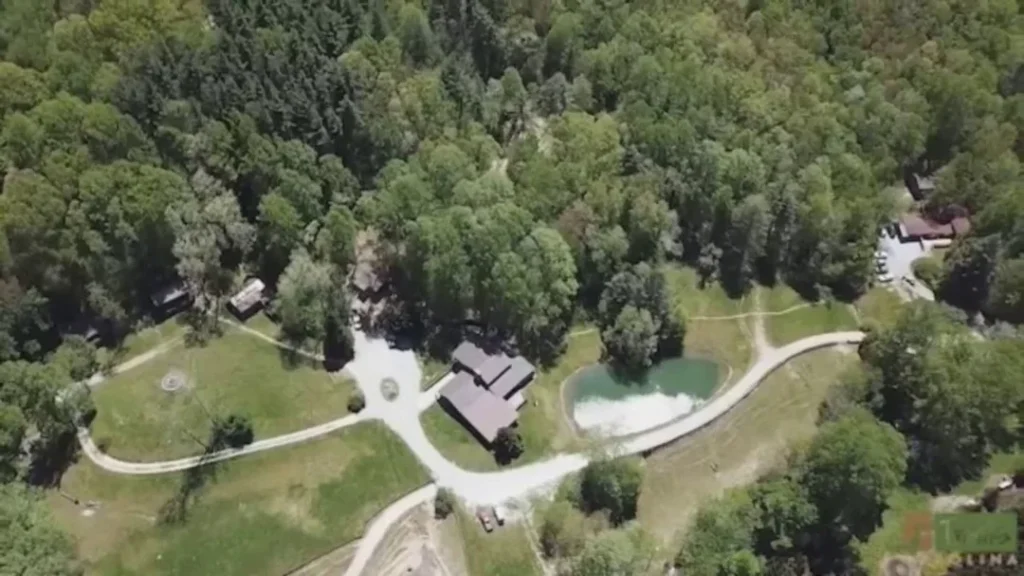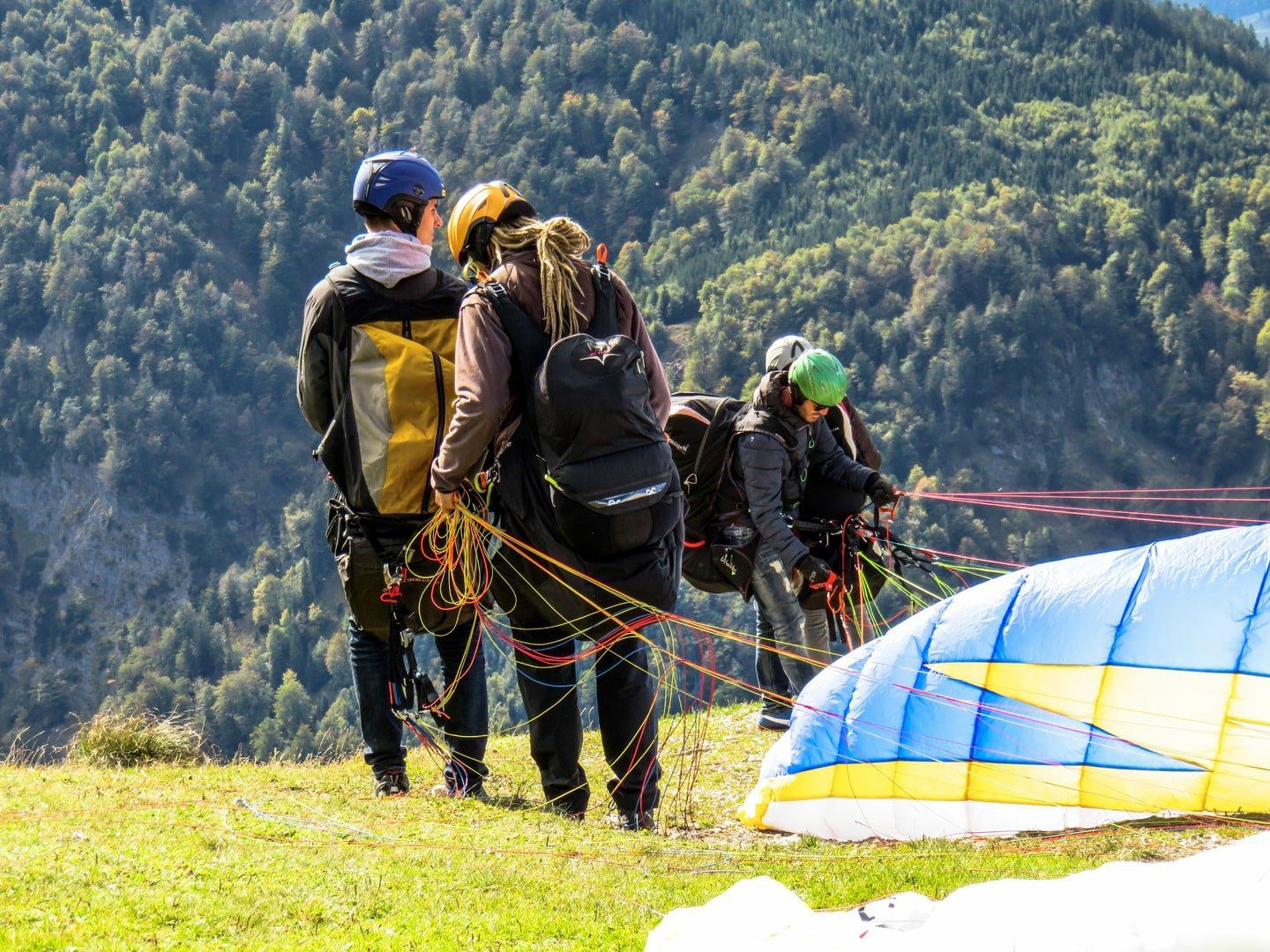
North Carolina health officials said Friday that they are removing all children from the care of a wilderness therapy program, Trails Carolina, nearly two weeks after the death of a 12-year-old New York boy.
The boy was transported by two men from New York to Trails Carolina on Feb. 2. The next morning, emergency workers responded to a 911 call reporting that the boy was not breathing. His cause of death is still pending.
In an affidavit filed with a search warrant, Detective Andrew Patterson stated that when investigators arrived on Feb. 3, the boy was cold to the touch and his body was in rigor mortis. A CPR mask covered the boy’s face and detectives noted possible bruising around his eye, Patterson stated.
In 2022, USA TODAY published this detailed investigation into the long-term impact of wilderness therapy programs, including a look at Trails Carolina specifically.
In brochures and online, these programs can look idyllic, touting an opportunity for children struggling with a myriad of behavioral issues to “connect with nature” and “find hope and healing.”
But former campers who spoke with USA TODAY paint a different picture. They tell of being abused by staff, of fearing punishment at all hours. They describe living in filth.
They call themselves survivors.
One former staffer we spoke to at Trails Carolina detailed why he thought his training as well as the treatment teens received at the program was entirely insufficient.
[adinserter name="One"]Here’s the whole story:
The bathroom consisted of a tarp tied between two trees.
When Katelyn Haruko Schmisseur used it, she made eye contact with a staff member. She squatted, they stared. A requirement of her wilderness therapy program, they told her.
Because of her eating disorder, a staff member was with her at all times almost the entire length of her stay in the Utah desert.
A bucket lined with a biohazard bag acted as a receptacle for solid waste. As the weather got warmer, the smell got stronger. The flies were incessant.
With only one roll of toilet paper a week to be split among 10 people, Katelyn would resort to cleaning herself with sticks and leaves.
“It was just so nasty,” she says. “They didn’t care. … (It was) just another form of dehumanizing you and taking away your dignity.”
She was 16 when she first arrived with only a few items, all stuffed into a 40-pound backpack.
The first activity? A grueling 3-mile hike.
“I was terrified,” says Katelyn, now in her 20s.”I missed my family more than anything. I just remember feeling so helpless. It’s like you’re living in this existence, but you don’t have free will, you don’t have autonomy, and they make that very clear to you. They make it very clear to you that you are a patient. You have no freedom. You have no choice.”
Katelyn is one of many former campers coming forward to share their experiences with wilderness therapy, a type of treatment parents often turn to when they feel they need professional help for their kids and counseling isn’t enough.
In recent years, the “troubled teen industry,” which includes reform schools and residential treatment facilities, has come under scrutiny as former students speak out about the alleged mistreatment they experienced. (One big name who has elevated the cause is Paris Hilton.) But as the industry overall inches toward reform, wilderness therapy tends to fly under the radar.
That’s because it’s often billed as a shorter-term solution to problems (the typical wilderness program runs about 90 days), and there’s also a lack of federal oversight into these private programs, experts say. In brochures and online, these programs look idyllic, touting an opportunity for children struggling with a myriad of behavioral issues to “connect with nature” and “find hope and healing.”
But former campers who spoke with USA TODAY paint a different picture. They tell of being abused by staff, of fearing punishment at all hours. They describe living in filth.
They call themselves survivors.
[adinserter name="Two"]And, perhaps most telling, they say wilderness therapy served as the gateway to separate, longer-term residential treatment centers. Of the dozen former campers USA TODAY spoke to, nine were sent for further treatment. None say wilderness therapy helped them with their struggles. All described their experience as negative and traumatizing.
Despite accusations of abuse and experts in the field denouncing this type of treatment, some remain staunch proponents of wilderness therapy, saying it worked for their families. And even with past lawsuits and viral horror stories, wilderness therapy is still a booming industry in the U.S. today.
Despite allegations, deaths wilderness therapy lives on
Wilderness therapy has existed in some form for more than half a century, gaining steam in the ‘90s with programs promising the healing power of nature could cure any problems parents faced with their kids. The pandemic gave it an extra bump.
“Business was booming for them (during COVID-19),” says Jonathan Hyde, a former staffer who took a job at North Carolina-based wilderness program Trails Carolina in 2020. “People were at their wits’ end at home, and their kids (were) acting up, so they (sent them) off.”
In the United States, there are about 40 wilderness therapy programs – part of 2,000 overall “troubled teen” programs, with anywhere from 150,000 to 200,000 children now enrolled, says Bobby Cook, executive director and chief operational officer of Breaking Code Silence, a nonprofit that advocates against the troubled teen industry. The approaches of these programs vary, as do the reasons that parents send their teens to them.
A reliable media outlet reached out to wilderness therapy programs and their proponents, who defended their practices as enriching and beneficial to participants. Trails Carolina, for example, says it fully trains its staff, involves parents in the process and develops individual treatment plans for each student. Many claim those who completed the therapy fully recovered from disorders such as depression and anxiety.
[adinserter name="Three"]But critics point to the number of allegations and deaths at wilderness therapy camps as a clear sign that parents, legislators and the media need to be looking more closely at these institutions.
Among the fatalities: In 1990, 16-year-old Kristen Chase died of heatstroke three days after arriving at her wilderness program. In 2000, 15-year-old William Edward Lee died from a head injury after being restrained by staff; 14-year-old Ian August died of hyperthermia at his wilderness therapy program two years later. The same year, Charles Moody, 17, died of asphyxiation after being restrained. In 2005, Anthony Haynes, 14, died while being punished at a wilderness boot camp. In 2007, Caleb Jensen, 15, died while at a wilderness camp, his body found bundled in a feces- and urine-soaked sleeping bag. In 2011, Daniel Huerta, 17, died while being driven by a staff member. In 2016, 19-year-old Lane Lesko died during an escape attempt at a hybrid wilderness-residential treatment center.
[adinserter name="Four"]‘I was so desperate’
Most parents don’t send their kids off to wilderness therapy at the first sign of a problem. Rather, kids wind up there after their parents feel they’ve exhausted all other options.
[adinserter name="Five"]Katelyn’s mother, Tessie Schmisseur, learned about wilderness therapy through a friend-recommended educational consultant, whom she describes as a “very demanding, pushy … high-pressure salesperson
.” Tessie says she was told her daughter’s life was in danger if she didn’t enroll in a program, and after a phone conversation with Katelyn that left her feeling “like I was going to have a heart attack,” she agreed.
“I was so desperate,” Tessie recalls. “I’m an only child, and I’m a single mom. … The thought of something happening to her, I couldn’t live with myself.”
Katelyn’s experience is not unique. Many parents turn to wilderness therapy as a last resort.
[adinserter name="Six"]For Cassie Ingle, it wasn’t just about helping her child. It was about saving her marriage. She and her husband had spent the last decade raising their adopted son, dealing with the ups and downs that came with raising a child with reactive attachment disorder (RAD), a condition that makes it difficult for children to form healthy, loving relationships.
The couple had tried various forms of therapy, but nothing seemed to work. Then they found out about wilderness therapy, and it felt like their last hope.
“We just needed a break,” Ingle says. “We needed a break from his rage. We needed a break from his anger. We needed a break from his constant need for attention and reassurance. We were so tired, and we had tried so hard to help him.”
[adinserter name="Seven"]So they sent him to a wilderness program in Georgia, hoping that three months in the woods would be the key to unlocking their son’s potential.
It wasn’t.
“The program didn’t help him. It made things worse,” Ingle says. “He came back to us more angry, more hostile, more depressed than he was when he left. And we were more hopeless than we were when he left.”
[adinserter name="Eight"]Now, both Schmisseur and Ingle are advocating for more oversight of wilderness therapy programs, hoping to spare other families the pain and trauma they’ve experienced. They want parents to know that there are other options out there, and that sending their kids away to a wilderness program might not be the solution they’re looking for.
“People need to know that there are better options out there,” Ingle says. “There are people who can help you. You just have to find them.”



